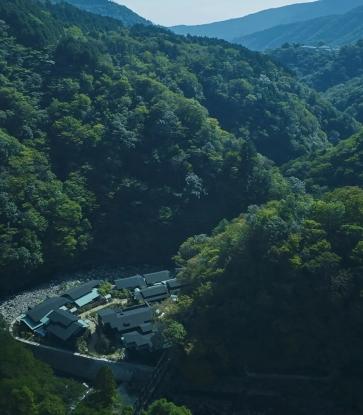Shinya Goshima, fondly known as the “warm sake magician”, opened Godenya in Hong Kong nine years ago. Over the course of almost a decade, not only has Godenya become Hong Kong’s most sought-after sake restaurant, Goshima himself has been awarded the Sommelier Award in MICHELIN Guide Hong Kong & Macau 2024, proudly supported by RSRV.
Receiving this coveted title gave him great joy, surprise, and a sense of steadfast optimism for the future of sake.
RELATED: The Full List of the MICHELIN Guide Hong Kong & Macau 2024

Mr. Tony Atayde, Marketing Director of Pernod Ricard Hong Kong and Macau, said during the award presentation, “In the world of gastronomy, sommeliers play a vital role. Their expertise and passion guide us through the vast world of wines and champagnes, enhancing our industry through each glass served.” Nowadays, sommeliers not only provide pairing services on wine, but also sake, which further enriches the world of food and alcohol pairing.
“I was very surprised to be awarded the Sommelier Award. I thought this award is about wine and not sake, so I was thrilled that sake was recognised in this category.” On stage, Goshima was so excited that he could hardly speak. After he received the award, the deeply respected sake master was approached by a chef, who told him, “This is a historic moment, a game-changing moment.” This deeply moved Goshima. To him, the honour of being the Sommelier Award winner is a tremendous milestone for the global recognition of sake.
“In the future, I have even greater responsibilities, and will work hard to convey the charm of Japanese sake.” Besides sake, Goshima also enjoys champagne and wine. For example, sharing memories of RSRV Champagne with colleagues and friends during the MICHELIN Gala Dinner has become one of the most unforgettable and precious moments of his life.
RELATED: In the Mood for Sake

Popularising Sake
When he was young, Goshima once dreamed of becoming a soccer player. In university, he had his first sip of sake at an oden (fish cake stew) shop near his home. 20 years old at the time, Goshima got a job working at that cosy oden shop the next day.
“The shop owner recommended that I drink hot sake. I don’t remember the taste of that sake anymore, but when the shop owner heated the pot of sake in the oden pot, there was something almost nostalgic about it that really attracted me.” There was only one local sake available at the oden shop, so a few months later, he started buying sake from retail stores every day. The shop owner let him recommend sake to customers, so he experimented and taught himself how to pair sake with food, laying the foundation for his philosophy of sake pairing.
Deeply passionate about sake, Goshima even wrote his university thesis on sake. “When researching about the sake industry, I discovered that despite there being many high-quality sakes, the industry was rapidly declining, which was a huge pity. I started thinking about what I could do — the answer was to popularise sake outside of Japan; elevate the value of sake; and demonstrate its potential and value through sake and food pairing.”
Following his professional training in sake brewing, Goshima published his university thesis titled “A Study of Overseas Consumption of Sake”, which became the most cited article on the topic of sake globalisation for the next eight years. Even then, he believed he could do more in popularising sake, so he decided to move to Hong Kong to open Godenya. In 2023, Godenya was awarded its first MICHELIN Star.
RELATED: 5 Chefs With Surprising Past Careers

“When I first arrived in Hong Kong, I noticed that many people were drinking wine with their meals, but no one was drinking sake. I thought that if even 1-5% of people started drinking sake, it would lead to a significant increase in sake consumption. I believe that sake pairs very well with Cantonese cuisine. If we can create similar pairings in restaurants, it would have a profound impact,” Goshima explains, hoping that he can become the bridge between Cantonese cuisine and Japanese sake.
Sake: A Seasonal Experience
He started by considering the taste preferences and consumption patterns of Hong Kong customers: Hong Kong consumers come from diverse cultural backgrounds with different mindsets and preferences. However, understanding what is good sake and Japanese cuisine requires experience.
At Godenya, the seven sakes paired with dishes on the menu signify a progression in tasting experience. The first and second sakes can be enjoyed without much prior tasting experience. They are typically sweet and refreshing sparkling sakes. The second sake usually has fruity notes that evoke a pleasant physiological response. They simply need to help the customer relax, enjoy themselves, and pique their interest.
RELATED: Ask A Sommelier: How To Pick The Perfect Wine For A Cantonese Meal

What’s more, incorporating seasonality into the pairing of sake and food is also part of Goshima’s philosophy. For example, in summer, people often prefer to consume “yin” foods to cool down, so one can consider pairing with low-alcohol and aromatic sakes as their refreshing fruity notes can help combat the summer heat. On the other hand, air conditioning is often used during the summer. In a cool environment, “yin” foods can be paired with warm or hot sake instead, such as matching a daiginjo sake with fish roe or sea urchin; or pairing herbs and vegetables with refreshing sakes (for instance, a sake with matcha aroma).
Once the customer develops an interest, the third sake is one that requires some experience in order to appreciate its most crucial characteristic: umami. The sakes that follow include aged, hot, and acidic styles, allowing the customer to explore the different facets of sake. Many returning customers often discover flavours that they hadn’t noticed before. Goshima sometimes caters to experienced customers’ special requests, such as serving hot or aged sake, which is an interesting experience for both him and his customers.

In winter, “yang” foods and strong-tasting dishes are often preferred. A sake packed with umami can be served to add vibrancy to the dishes. Goshima mentions that hot sake is particularly enjoyable in winter because sake is gentle and doesn’t cool down the body. Winter food and sake pairings can include fish broth with a hot, barrel-aged sake; charcoal-grilled fish with an aged sake; and cheese with sake.
6 Key Principles to Sake Pairing
When people first encounter sake, they often ask: What’s the difference between pairing cold and hot sake? Goshima explains, “The key to pairing cold sake lies in understanding its aroma components and acidity. Hot sake has a longer finish, so it should be matched with the lingering flavours of the food."

Apart from temperature, Goshima also highlights six key considerations when it comes to sake pairing:
1. Intensity: Sake often has a higher alcohol content compared to wine, which offers more versatility in pairing options. Its flavour and intensity can be altered by changing the temperature of sake or serving it using different types of vessels.
2. Sweetness: People enjoy sweet flavours. A harmonious and enjoyable pairing can be created by combining the sweetness of sake with that of food. Sake works particularly well with dishes that have fruity elements. (Right image: Godenya)

3. Aroma: The pairing of aromas between food and sake is vital. For instance, daiginjo sakes tend to display fruity aromas, while aged sake exhibits aromas of soy sauce, caramel and nuts. Pairing foods and sakes that have similar aromas can create a delightful synergy.
4. Acidity: The most common acids found in sake are succinic acid and lactic acid. Succinic acid contributes to the umami taste, but excessive amounts can be perceived as bitterness or astringency. Lactic acid has a milky flavour and brings a sense of richness. Another common acid is malic acid, which imparts a refreshing mouthfeel. Pairing these acidic profiles with the acidity in dishes can enhance flavours, create structure and textures, balance different tastes, and promote the digestion of fats. Acidity also stimulates the glands and increases the anticipation for food.
5. Pairing with Savoury Foods and Rice: Briny seafood and pickled vegetables are rich in umami and savoury flavours, which can be overwhelming when consumed alone. However, the saltiness can be mitigated when paired with rice. The sweetness of rice can also complement the sweetness of sake, creating a synergistic effect that enhances the flavours of both the sake and the dish.
6. Timing: Another key consideration is the “transition of flavours”. Whether in food or sake, sweetness and aroma are often the first sensations to be experienced, and they can be considered the “top notes”. The subsequent appearance of umami can be seen as the “finish”. The top notes are relatively easy to understand, while being able to recognise the finish takes awareness and time. Through sake pairing, especially aged and hot sakes, it becomes easier to match the top notes and finish with food. By adjusting the timing of flavours, the food’s overall mouthfeel can also be enhanced.

Revitalising Sake from Rural Japan
Looking to the future, Goshima hopes to contribute to the revitalisation of rural Japan and local countryside. “Many sake breweries are located in rural areas. If sake pairing becomes more popular, the consumption will increase, which can greatly support the sake industry and agriculture in rural Japan. Only when the entire industry is profitable can it attract people to enter the business and ensure the sustainable development and revitalisation of the entire region.” Hailing from Kuwana City in Mie Prefecture, Goshima particularly wishes to assist breweries around the Noto Peninsula.
“In early 2024, a severe earthquake struck Japan’s Noto Peninsula, seriously damaging 11 sake breweries. Although the employees were all safe, the housing, facilities and brewing equipment were all damaged. Water and power supply were also disrupted. This year’s brewing work will be very challenging, and I hope to support them,” he says.
In this region, two brands that Goshima especially likes and frequently uses are “Sogen” and “Okunoto no Shiragiku”. “The Noto style is characterised by its umami and elegant aftertaste. The local seafood and fermented foods are particularly well-known, so naturally, they pair perfectly with Noto sakes.” Having been researching sake for over 20 years, Goshima also ages his own daiginjo and namazake. He has tried sake aged for anywhere from 20 to 50 years, and has discovered that namazake aged for over 10 years has the perfect flavour. The “Shinkame” 1999 namazake is one of his favourites in recent years.
“My favourite pairing? Namazake and sushi!” says Goshima with a hearty laugh.
The article is written by Gloria Chung and translated by Iris Wong.
Read the original article here.
Hero Image is from Godenya






















